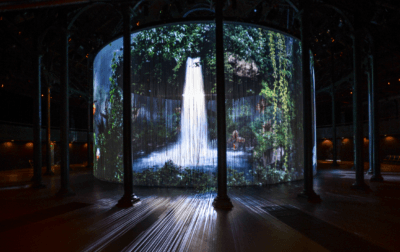As we look towards 2025, the landscape of event planning is evolving rapidly, with gamification emerging as a powerful tool for enhancing attendee engagement. By integrating game mechanics into events, planners can create immersive and interactive experiences that not only entertain but also foster deeper connections and learning. Let’s delve into the transformative power of gamification in event planning and explore how it is set to shape the future of engagement.
The Rise of Gamification in Events
Gamification, the application of game-design elements in non-game contexts, is not a new concept. However, its integration into events has seen a significant surge in recent years. According to industry experts, gamified elements can increase attendee participation by up to 60% and enhance overall event satisfaction by 50%. This trend is driven by the inherent human love for play and competition, which gamification taps into to make events more engaging and memorable.
Creating Immersive Experiences
One of the primary benefits of gamification is its ability to create immersive experiences. Traditional events can sometimes feel static, with attendees passively consuming content. Gamification transforms this dynamic by encouraging active participation. For instance, incorporating interactive quizzes, scavenger hunts, and live polls can turn a standard conference into a vibrant and interactive environment. These elements not only keep attendees engaged but also enhance their retention of the presented information.
Fostering Networking and Collaboration
Networking is a crucial aspect of any event, yet it can often be daunting for attendees. Gamification provides a fun and effective way to break the ice and foster connections. Activities such as team-based challenges, interactive icebreakers, and virtual business card exchanges encourage attendees to collaborate and interact with one another. This not only builds a sense of community but also facilitates meaningful professional relationships that can extend beyond the event itself.
Driving Sponsor and Exhibitor Engagement
For sponsors and exhibitors, the primary goal is often to generate leads and drive brand awareness. Gamification can significantly enhance their engagement with attendees. By integrating gamified elements such as booth challenges, QR code hunts, and interactive product demos, sponsors can attract more visitors and create memorable brand experiences. This increased interaction translates into higher ROI for sponsors and a more dynamic event environment.
Enhancing Learning and Information Retention
Gamification is particularly effective in educational sessions where information retention is key. By turning passive listening into active participation, attendees are more likely to absorb and retain information. Techniques such as interactive quizzes, real-time feedback, and gamified workshops can transform the learning experience. Studies have shown that gamified learning can increase knowledge retention rates by up to 30%.
Measuring Success with Data
One of the often-overlooked benefits of gamification is its ability to provide valuable data insights. Event organizers can track various metrics such as attendee participation rates, engagement levels, and interaction patterns. This data can then be used to refine future events, ensuring they are even more engaging and effective. Additionally, feedback gathered through gamified surveys and polls can offer deeper insights into attendee preferences and experiences.
Best Practices for Implementing Gamification
Set Clear Objectives: Define what you aim to achieve with gamification, whether it’s increased engagement, enhanced learning, or greater sponsor interaction.
Choose the Right Tools: Select gamification platforms and tools that align with your event goals and audience preferences.
Keep It Simple: Ensure that the gamified elements are easy to understand and participate in. Overly complex games can deter participation.
Offer Incentives: Use rewards and incentives to motivate participation. Prizes, recognition, and exclusive content can drive engagement.
Integrate Seamlessly: Gamification should enhance the event experience, not disrupt it. Ensure that the gamified elements are well-integrated into the event flow.
Measure and Iterate: Use data to measure the success of your gamification efforts and make necessary adjustments for future events.
As we approach 2025, gamification stands out as a key trend in event planning. By creating immersive, interactive, and engaging experiences, gamification not only enhances attendee satisfaction but also drives deeper learning and stronger connections. For event planners looking to stay ahead of the curve, embracing gamification is no longer optional—it’s essential.



